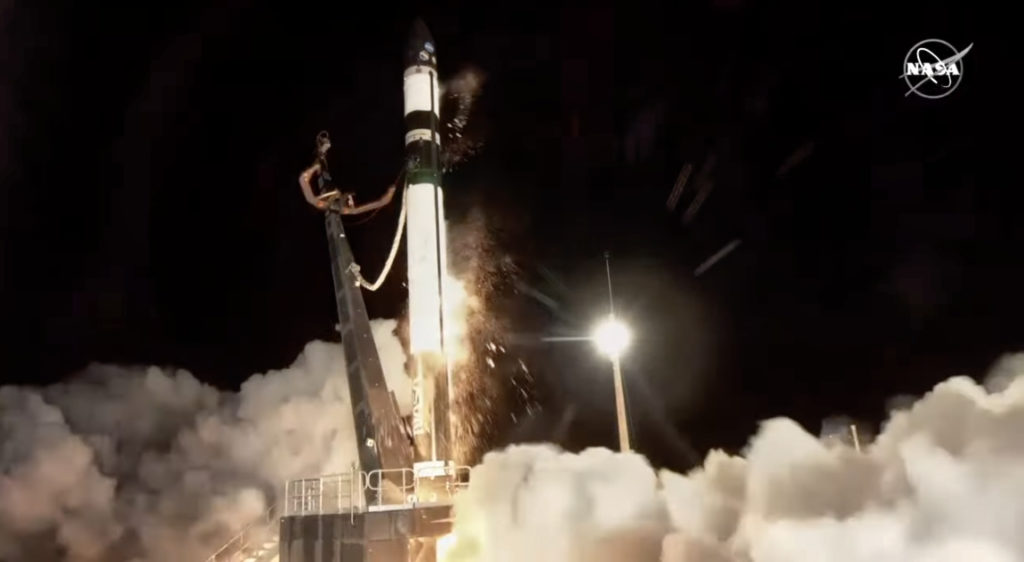


Rocket Lab launched the CAPSTONE cubesat from Rocket Lab Launch Complex 1, Pad B, located on New Zealand’s Mahia Peninsula on June 28th via an Electron rocket.
The Cislunar Autonomous Positioning System Technology Operations and Navigation Experiment (CAPSTONE) cubesat will be the first spacecraft to test the Near Rectilinear Halo Orbit (NRHO) around the Moon.
Researchers expect this orbit to be a gravitational sweet spot in space – where the pull of gravity from Earth and the Moon interact to allow for a nearly-stable orbit – allowing physics to do most of the work of keeping a spacecraft in orbit around the Moon. NASA has big plans for this unique type of orbit.

Illustration by NASA/Daniel Rutter
This historic pathfinding mission is in support of NASA’s Artemis program which will land the first woman and first person of color on the Moon.

Using the company’s Electron rocket and new Lunar Photon upper stage, Rocket Lab will inject CAPSTONE to a highly efficient, transfer orbit en route to the Moon.

CAPSTONE is owned and operated by Advanced Space in Westminster, Colorado, for NASA.

CAPSTONE’s primary objective is to test and verify the calculated orbital stability of a Near Rectilinear Halo Orbit around the Moon, the same orbit planned for Gateway.

NASA’s Gateway is a small space station that will orbit around the Moon to provide astronauts with access to the lunar surface and will feature living quarters for astronauts, a lab for science and research and ports for visiting spacecraft.

CAPSTONE will also test a navigation system developed by Advanced Space that will measure its absolute position in cislunar space using interaction with NASA’s Lunar Reconnaissance Orbiter without relying on ground stations for navigation support.

CAPSTONE is one of the first steps to learn how to operate more robust missions in this unique orbit, thus laying the groundwork for future exploration of our solar system.


